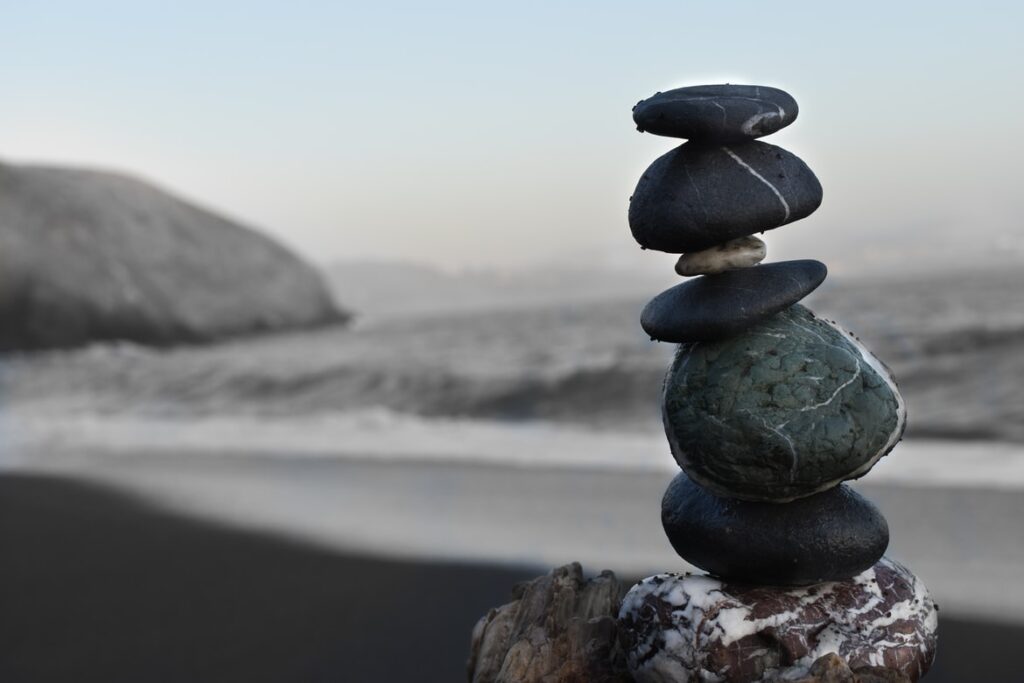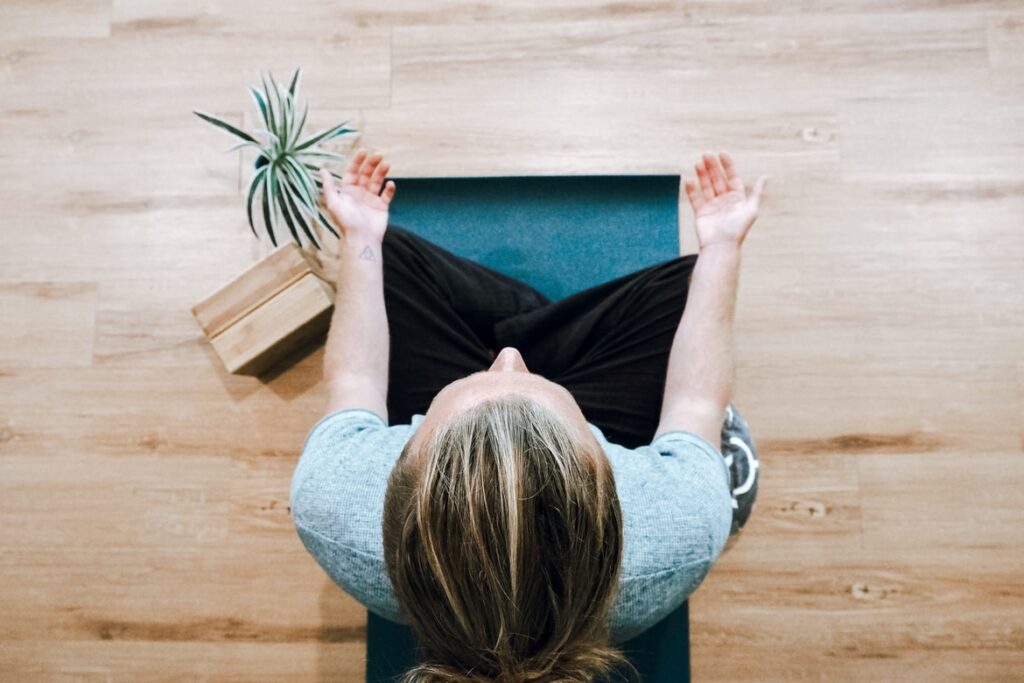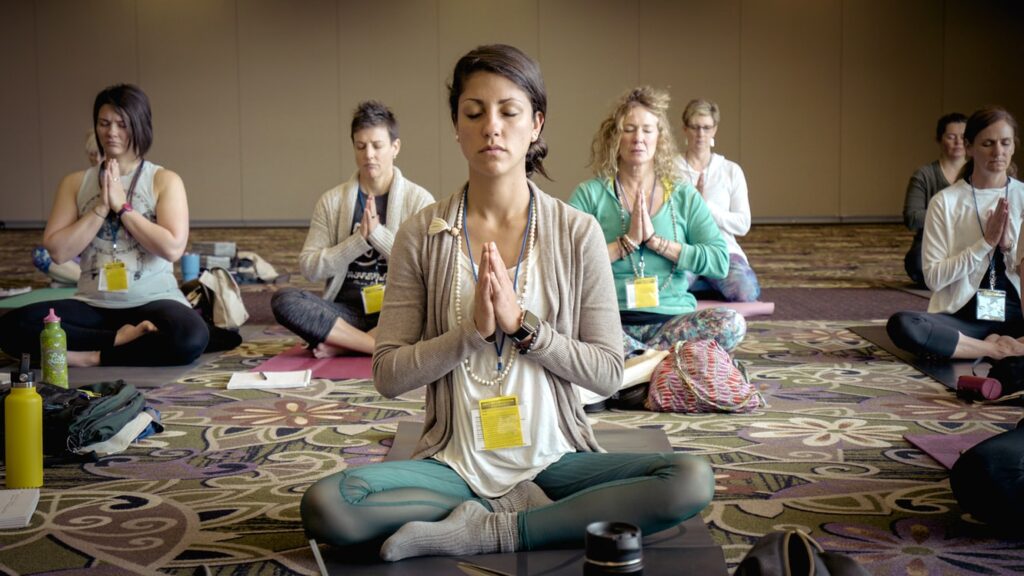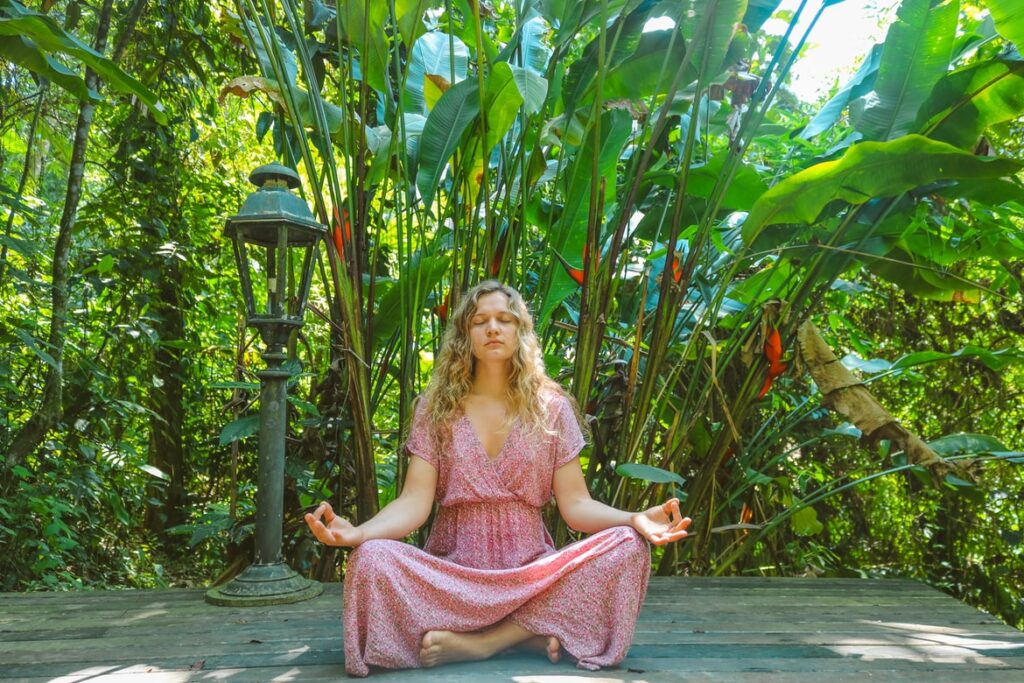Everyone knows that meditation is a great way to increase focus and well-being, but it isn’t always easy to find the time to do it. That’s where guided meditations come in. These free, guided meditations help you get started with meditation in less than five minutes a day.
Meditation for beginners is a great way to begin a regular practice that can have many benefits for your overall health and well-being. It’s also a great way to get into a routine that can help you reduce stress, eat healthier, and achieve a more peaceful and mindful state of mind. There are countless ways to meditate, and we’ve gathered 10 awesome guided tracks that can help you get started.
Meditation is a lot of fun and an easy way to take care of your body, mind and soul. But it can also be a great way to improve your life and make money. Meditation teaches us to live in the moment, to live in the present and to appreciate it all.
With no previous meditation experience, I chose to enroll in a 10-day silent Vipassana meditation course in 2015. People cautioned me that it was an intense start to a sitting practice, but I persevered because I believed it would provide me with a foundation for a future of meditation.
Those folks were correct; it was a really tough ten days. A 10-day course was not an elegant way to begin meditating. While I would take another Vipassana course, I see the value of beginning a practice before embarking on, say, a multi-day course requiring a dozen or so hours of meditation each day. You may learn more about it by clicking here.
This article provides an option for people who wish to begin meditating but are unsure where to begin. It’s a ten-week trial of several kinds of meditation. This enables everyone to find the habits that are most beneficial to them.
Purists may argue that it dilutes the goal of a separate, profound meditation practice, and this may be true to some extent. However, many of us find it difficult to establish a new habit because we are unsure of how or where to begin. So, in the case of a novice to meditation, I wanted to offer an introduction to a variety of methods – all of which I have used and continue to use in my practice.
I didn’t know I wasn’t meant to empty my mind of all thoughts when I took the Vipassana course. I was thinking I was doing something wrong since all kinds of ideas were popping into my head. I would have known that ideas would come if I had practiced meditation beforehand, but the key is to notice them and gently return to the meditation practice. Not to attain an empty mind by eradicating all thought.
Since finishing that 10-day course, I’ve relied on meditation to keep me afloat and anchored in the present. It has been a source of comfort for me through the most difficult months of my life, and I have returned to a more regular meditation practice as a coping strategy.
Of course, meditation was never meant to be a source of comfort in the contemporary world. The ancient spiritual practice arose to allow for a deep examination of the mind, which may lead to a significant change in our state of being. Many modern meditation techniques exclude the fundamental spirituality entirely, concentrating instead on the brain’s advantages, particularly for a brain that has been rewired for trauma as a result of life’s experiences.
“Just as athletics refers to a broad variety of physical skills, meditation is a catch-all term for many kinds of contemplative practice. The final effects of both spots and meditation differ depending on what you really do.”
Making new adjustments accessible and then allowing individuals to be disciplined in their application until the practice becomes a habit is the greatest approach to promote them.
- Beginners’ 10-Week Free Guided Meditation Tracks
- Metta, Metta, Metta, Metta, Metta, Metta, M (Loving Kindness)
- WEEK 2: MEDITATION ON THE BODY SCAN
- WEEK 3 – CONSCIOUS BREATHING
- WEEK 4 – CONSCIOUS BREATHING
- WEEK 5: Meditations on Self-Compassion
- WEEK 6: Meditations on Self-Compassion
- WEEK 7: Meditations on Self-Compassion
- WEEK 8: Nanso Uran Hou, Zen (The Duck Egg Meditation)
- WEEK 9: Zen Meditation with Soft Ointment
- WEEK TEN: ZENITH, BREATH MINDFULNESS
- Meditation’s Neuroscience and How to Meditate
Beginners’ 10-Week Free Guided Meditation Tracks

I’m neither a meditation specialist nor a teacher. I am, however, skilled at bringing individuals from different backgrounds together to try something new. Much of my work is dependent on my excitement transferring in some manner to my lovely readers, whether it’s soup, cow head tacos, or safety whistles (for the older readers out there!).
I got the wonderful idea of us all meditating together since many Legal Nomads readers meditate. Previously, I compared worldwide support for our trip as lights blinking on from various places on a map. I surveyed my Facebook and Instagram followers to see who may be interested. I estimated about 10-20 individuals would attend.
I was mistaken.
During the first week, 400 individuals joined up and voted on a convenient time. Due to time zones and work schedules, I’ve decided on two Sunday times.
As a result, I embarked on a 10-week adventure of reading group meditations. Hundreds of us meditated together every Sunday at 10 a.m. and 8 p.m.
It was stunning.
As a result, this 10-week beginner’s meditation course enables us to all explore our brains together.
If you’re new to meditation, keep in mind that each of the recordings below is guided, with instructions that will lead you through the whole 20-minute track. See the links at the bottom of this article for further information on how to meditate.
Table of Contents and Schedule for Group Meditations for Beginners
These may be done at your own speed, but it’s a lot of fun to practice knowing that there are others all around the globe doing the same thing at the same time.
Metta, Week 1 Week 2: Scan of the Body Body Scan + Mindful Breathing (Week 3) Anapanasati/Mindful Breathing (Week 4) Neff/Self-Compassion Week 5: Germer/Self-Compassion Week 6: Neff/Self-Compassion Week 7: Germer/Compassion for Oneself Week 8: Duck Egg Meditation (Zen) Daizan Skinner/Zen/Soft Ointment (Week 9) Daizan Skinner/Zen/Mindfulness of the Breath (Week 10) Bonus: Meditation’s Neuroscience and How to Meditate
Metta, Metta, Metta, Metta, Metta, Metta, M (Loving Kindness)

I selected a metta meditation for the first week. Metta is a Pali word that meaning “loving-kindness” and alludes to an unconditional, intelligent love. A love that is unconditional and without conditions.
The decision was straightforward: the meditation begins with ourselves, then expands to include friends, family, and finally all living creatures.
Metta doesn’t have to go through any hurdles; everyone deserves it. It is unafraid to ask for anything in return.
So.
This is a recording by Tara Brach, the author of Radical Acceptance, a crucial book for perfectionists everywhere. I’m one of them, and we’re beginning with metta in the attitude of loving-kindness toward ourselves.
Metta requires concentration, while Vipassana necessitates continuous awareness of change – awareness without dwelling over it. Vipassana (the course I took and the practice I maintain) helped me create a buffer between myself and my emotions. Metta, on the other hand, seems to be a profound concentration on primal, compassionate love.
Further reading on acceptance and loving-kindness:
Tara Brach’s radical acceptance.
WEEK 2: MEDITATION ON THE BODY SCAN

We switched from metta (loving kindness) to a basic body scan for our second group meditation. I experience a lot of discomfort when leaking CSF, yet I also feel detached from my body. And, of course, I’m emotionally connected to the goal of walking once again.
This is where the body scan comes in.
For starters, it’s done laying down, so we’re all on our backs throughout this meditation.
But it’s also a thorough, moment-by-moment examination of what the body is going through. We all have stress in our bodies, but although we may experience discomfort as a consequence of it, we don’t always know where it is.
The aim is to observe what is occurring on that minute level, helping voice where the pain is and what it says, with mindfulness and open acceptance of what one experiences throughout the scan on a micro level.
I get a feeling of release, relaxation, and tranquility when I do these meditations.
While metta had us focusing on all people and things, the body scan shifts our attention to the body itself, starting with the left foot and finishing at the top of the head.
This week, I went with a 30-minute scan, but in a few weeks, I’ll post a 45-minute one. After reading John Kabat-Full Zinn’s Catastrophe Living and learning about his mindfulness-based stress reduction approach, I began performing body scan meditations.
More information on why I selected this book – and others that may assist with chronic pain – can be found in my article here for newer readers.
I hadn’t yet completed the Vipassana course when I first heard this meditation. “I attempted the meditation but I believe something is amiss with the audio – there were all these intervals of silence?” I wrote a buddy. So what if I didn’t bother?” Of course, I now understand that the quiet is WHEN YOU SHOULD BE MEDITATING.
All of this is to suggest that it’s a discipline, not something that comes naturally or intuitively.
The body scan meditation, according to John Kabat-Zinn:
“The body scan is not for everyone, and even for those who like it, it is not necessarily the meditation of choice. However, regardless of your circumstances or health, it is very beneficial to know about and practice from time to time. The body scan is a method of tuning your body, if you think of it as a musical instrument. The body scan, if you conceive of it as a cosmos, is a method to get to know it. If you see your body as a home, the body scan is a method to open all the windows and doors and let the fresh air of awareness to sweep it clean.”
More information about mindfulness and pain may be found at:
Jon Kabat-book Zinn’s Full Catastrophe Living: Using the Wisdom of Your Body and Mind to Face Stress, Pain, and Illness (Thich Nhat Hanh’s introduction)
I shot this photo when visiting the temples of Ankor, but I never mentioned it on my site.
WEEK 3 – CONSCIOUS BREATHING

Mindfulness of breath is a relaxing technique that helps to quiet the mind and improve focus. Vipassana is an insight meditation in which “one eventually sees the real essence of existence” via the practice of continuous careful attention to sensation.
The initial days of the Vipassana course I took were dedicated to breath meditations, and it wasn’t until day 4 that we moved into Vipassana itself. We were informed that the reasoning was that one must first acquire calm and focus before moving on to insight and awareness of more.
Anapanasati is the name given to traditional awareness of breath practices. It’s a simple word to translate: awareness (sati) of breathing (pana). When our minds wander, the aim is to utilize the breath as the focus. The emphasis of last week’s track was on particular bodily regions and feelings. This, on the other hand, is all about actual breathing experiences.
This week, I went with a halfway breathing track that begins with a body scan and then goes into some breathing exercises. The track will concentrate on breathing the next week, with a classic Anapanasati guided meditation. They typically last an hour, but I’ll try to locate one that’s a little shorter.
We assist our brains balance by directing less attention toward stresses, worries, or discomfort throughout the meditation, just like we did with the previous meditations. With frequent mindful breathing practice, returning to a state of balance becomes second nature, and it spreads to other areas of our life.
WEEK 4 – CONSCIOUS BREATHING
We’re performing another mindful breathing meditation, as I stated last week. Many are longer than an hour, but I selected this one since it concentrates on the four phases I learnt when I first learned how to perform it.
It begins by focusing on the physiology of breathing by counting (1) our outbreaths and (2) our inbreaths. When the mind wanders – as it will – we return to the first breath. After that, we (3) concentrate on breathing without counting in order to maintain the pace. Instead, focus on the infinity of sensations in flow that accompany each inhale and expiration. Finally, we (4) focus on the finer points of breathing, particularly around the nostrils.
The emphasis is on the breath as a technique to quiet the mind, as it was last week.
WEEK 5: Meditations on Self-Compassion

The topic of self-compassion will be the subject of our group meditations for the next two weeks.
In my article on dealing with chronic pain, I mentioned Kristin Neff’s work since I’ve found it particularly useful when it comes to pain and progress. Her book on self-compassion has also benefited many readers, as shown by the many letters I’ve received from individuals who have completed lengthier meditation programs based on her work.
We’re going to conduct a compassionate body scan at week five. Unlike the Kabat-Zinn scan a few weeks ago, this meditation begins at the top of the head (rather than the left foot), and it is based on self-compassion techniques.
What exactly does this imply?
It’s the ability to “treat oneself as you would a close friend who is suffering,” according to Neff. Compassion, in general (not just for oneself), requires an awareness of pain and a willingness to respond with kindness and understanding, as well as a desire to improve those conditions.
It entails a calm acceptance of the human condition’s fragility. Self-compassion, on the other hand, is compassion directed inward, toward oneself.
What exactly isn’t it? Self-compassion is not the same as pity, pride, or indulgence.
Instead of pursuing self-esteem, which, as Neff points out, may rapidly turn into narcissism, we’d all be better off concentrating on softening our self-recrimination. We open the door to cycles of self-loathing when we concentrate on feeling good about ourselves by having to be better than others (the dangers of excessive self-esteem).
The alternative, according to Neff, is to cultivate self-compassion. “Rather of being chilly or brutally self-critical, we should be nice to ourselves when things go wrong or we discover something in ourselves we don’t like.” Self-compassion recognizes the flaws that come with just BEING human, and instead of isolating ourselves in a judgmental trap, it focuses on connecting us to others when we fall.
1. Compassion for oneself (not self judgement) 2. Humanity at large (not isolation) 3. Mindfulness (rather than over-identification or excessive thought)
Yes, it’s our old pal mindfulness! Self-compassion, like all of the Legal Nomads meditation techniques we’ve done thus far, includes awareness. It’s critical to acknowledge, accept, and notice the unpleasant elements of life as they occur in the present moment. We adopt a BALANCED approach to unpleasant emotions, so they are neither repressed nor exaggerated, instead of doing what many of us do and pushing down the pain to suppress (or for others, to blow it up to spectacular proportions for public theater).
(I’m a suppress-the-feelings type of person, not a have-an-epic-meltdown kind of person, so this practice – and meditation in general – has helped me achieve a more equanimous state.)
Self-compassion, according to research in Neff’s book (below), reduces sadness, reduces stress, may assist ease the reasoning behind disordered eating, and can help relieve chronic pain. It boosts happiness, optimism, hope, healthy behaviors, and immunological function all at the same time.
Furthermore, practicing self-compassion or loving-kindness not only aids in the happiness of others, but it also helps in our own happiness. According to an article published in 2024 on meditation and its effects on the brain,
In Altered Traits, Davidson and Daniel Goleman’s authoritative 2017 book on the neuroscience of meditation, Davidson says, “Loving-kindness also increases the connections between the brain’s circuits for pleasure and contentment and the prefrontal cortex, a zone important for directing conduct.” “And after compassion meditation training, the greater the development in the link between these areas, the more altruistic a person becomes.”
Neff’s guided meditations are more relaxed, almost as though you’re being led by a buddy. Not suitable for every session, but a welcome change after last week’s anapanasati.
More resources on self-compassion:
Pema Chodron’s Start Where You Are: A Guide to Compassionate Living Kristin Neff’s book Self-Compassion: The Proven Power of Being Kind to Yourself
WEEK 6: Meditations on Self-Compassion

WEEK SIX! This week’s meditation is another contemplative approach to self-compassion, as promised. Chris Germer co-founded the Mindful Self Compassion course with Kristin Neff from last week’s track. It’s an eight-week program based on the concepts I mentioned in last week’s post: treating yourself as you would a good friend who’s going through a difficult time.
This will be the second of three weeks dedicated to this subject, owing to the fact that many of you have contacted me throughout the years, sharing your experiences in the same way that I have shared mine. And one common thread runs through both their tales and mine: a propensity to be AWFULLY harsh on ourselves, even when we are trying our best. And a tendency to push through instead of allowing our bodies to rest.
So I’m devoting three weeks to self-compassion since I’ve come to the conclusion that we all need it.
Next week’s meditation will be a broader scope meditation, a lovely mix of our first week’s loving-kindness track and this week’s compassion meditation “to ourselves.”
Additional reading:
Christopher K. Germer’s The Mindful Path to Self-Compassion: Liberating Yourself from Destructive Thoughts and Emotions (author of this track above)
WEEK 7: Meditations on Self-Compassion
You may find out more about it HERE.
This is the third and last week of our self-compassion series. A caring body scan came first. Then, for ourselves, a profoundly personal metta. Finally, I’ve selected a track that focuses on self-compassion for ourselves and others, tying the previous week together.
It’s a peaceful, silent meditation that focuses on delivering the gift of compassion to a particular person, as well as ensuring that we give it to our own bodies and souls.
Additional reading:
Christopher K. Germer’s The Mindful Path to Self-Compassion: Liberating Yourself from Destructive Thoughts and Emotions (author of this track above)
WEEK 8: Nanso Uran Hou, Zen (The Duck Egg Meditation)
Week 8’s track (Duck Egg) may be found HERE.
I’m happy to see us back together for week 8 of the group meditations after a little break. My objectives for these sessions are to give an overview of various kinds of meditation to assist readers narrow down what works best for them, as well as to provide a place for individuals to participate in a meditation practice while consciously interacting with others across the globe.
The audio for this week is a guided Zen soft ointment meditation based on the Zen “Soft and Duck Egg Meditation.”
Hakuin (1685-1768), a Zen teacher, first introduced the technique to remind the body to rest and recover. When Hakuin became sick, he was taken to the mountains outside Kyoto to visit a hermit called Hakuyo in the hopes of finding a cure for his illness. Hakuyo taught Hakuin how to meditate introspectively. The meditation activates our spiritual eyes, allowing us to achieve body-mind balance. The egg-shaped buttery ointment begins at the top and gradually melts down to our feet, carrying with it our anguish, grief, and agony.
Trevor Leggett’s poem “The Tiger’s Cave” on the Nanso Uran Hou meditation:
“If the learner notices that the four major components are out of balance in his meditation and that his body and mind are tired, he should rouse himself and repeat the meditation. Allow him to picture the heavenly So ointment, approximately the size of a duck’s egg, pure in color and smell, being put on the top of his head. Allow him to sense its beautiful essence and taste evaporating and flowing down through his head, its flow slowly leaving the shoulders and elbows, the sides of the breast and inside the chest, the lungs, liver, stomach, and internal organs, the back and spine, and hip bones. The mind descends, bringing with it all of the previous illnesses, adhesions, and aches in the five organs and six auxiliaries. A sound similar to water trickling may be heard. The liquid percolates through the whole body before softly descending the legs and halting at the soles of the feet.”
We imagine the melted liquid running out via the fingers and toes, progressively filling your surrounds until it appears like a lake that reaches the height of the navel, after the ointment has filled the whole body (as indicated by the track above). Once it reaches that level, it continues to circulate throughout the body and mind, aiding in the healing process.
WEEK 9: Zen Meditation with Soft Ointment
Week 9’s track (Soft Ointment) may be found HERE.
I’m providing a different version of the music from last week for week 9.
Julian Daizan Skinner of Zenways in London leads a Healing Ointment meditation as part of Week 9’s Duck Egg meditation. A long-time reader recognized the track from last week’s Zenways course and kindly offered us her teacher’s guided version to meditate with together.
I just had to post it since I adore it.
We’ve looked at a variety of meditation techniques, and the current weeks are devoted to Zen, which is utilizing meditation and mindfulness techniques to gain insight into reality and who we really are. This is known as kensho in Zen, which translates to “seeing or experiencing your real essence without relying on ideas or concepts.”
“There is no Zen without kensho, and full kensho is satori, or Zen awakening. This revelation is compared to discovering an endless treasure, since it entails the awakening of the whole capacity for the experiencing of experience itself.”
– Thomas Cleary’s Kensho: Zen’s Heart
With a soothing voice and a guidance to activating the parasympathetic nervous system and calming the body and mind, this Healing Ointment meditation is one of my favorites.
Additional Reading:
Shunryu Suzuki’s Zen Mind, Beginner’s Mind: Informal Talks on Zen Meditation Katsuki Sekida’s Zen Training: Methods and Philosophy (An authoritative exposition of the Zen path and a guidebook for zazen, the sitting meditation practice) Thomas Cleary’s Kensho: Zen’s Heart Julian Daizan Skinner’s Practical Zen: Meditation and Beyond
WEEK TEN: ZENITH, BREATH MINDFULNESS

Track HERE
I’m choosing to spend our last week on Zen since so many of you enjoyed last week’s Healing Ointment meditation.
First and foremost, many letters have inquired as to how to deal with the aggravation of losing one’s position or concentration on a regular basis. The act of returning to the meditation on a regular basis, without judgement or irritation, serves to train the brain. For me, the solution is a combination of loving discipline and the awareness that the brain adapts and becomes less loud with time.
This week, we’re going to focus on the breath.
Unlike week 4’s anapanasati (mindful breathing), which was based on the Vipassana meditation method, this week’s anapanasati (mindful breathing) is a Japanese Rinzai Zen practice.
“The Rinzai Zen tradition dates back 2500 years and has a history of teaching meditation for health and insight both in and outside of the monastery setting,” according to Julian Daizan Skinner of Zenways.
We become aware of our breath from deep in our belly in this 25-minute exercise, then count to maintain pace while letting any ideas or emotions to emerge and fade away. We return to the breath — without criticism! – and begin counting again when we lose concentration. The design is simple yet effective.
Additional Reading:
Rinzai Zen’s Journey to America (Article) Julian Daizan Skinner’s Practical Zen: Meditation and Beyond (who narrated this meditation)
Meditation’s Neuroscience and How to Meditate
“Meditative awareness relieves stress and promotes healing in the body. Meditation calms the mind and opens the heart softly. That is what the spirit is all about. It helps us learn to live more completely in the present moment; do you see the people we live with in the world we live in more clearly?”
While the neuroscience isn’t the emphasis of these meditations, it’s interesting to learn how meditation may alter our brainwaves. If you’re curious about how it impacts the brain, check out the video below:
Here are some fundamentals for people who are brand new to the practice:
It seems like everyone is taking up meditation these days. It has been getting a lot of attention in pop culture and is increasingly being used as a tool for wellness. One of the most popular methods involves sitting cross-legged in a lotus position for a period of time. This is practiced all over the world, and is referred to as the “Lotus Position.”. Read more about meditation ideas for beginners and let us know what you think.




